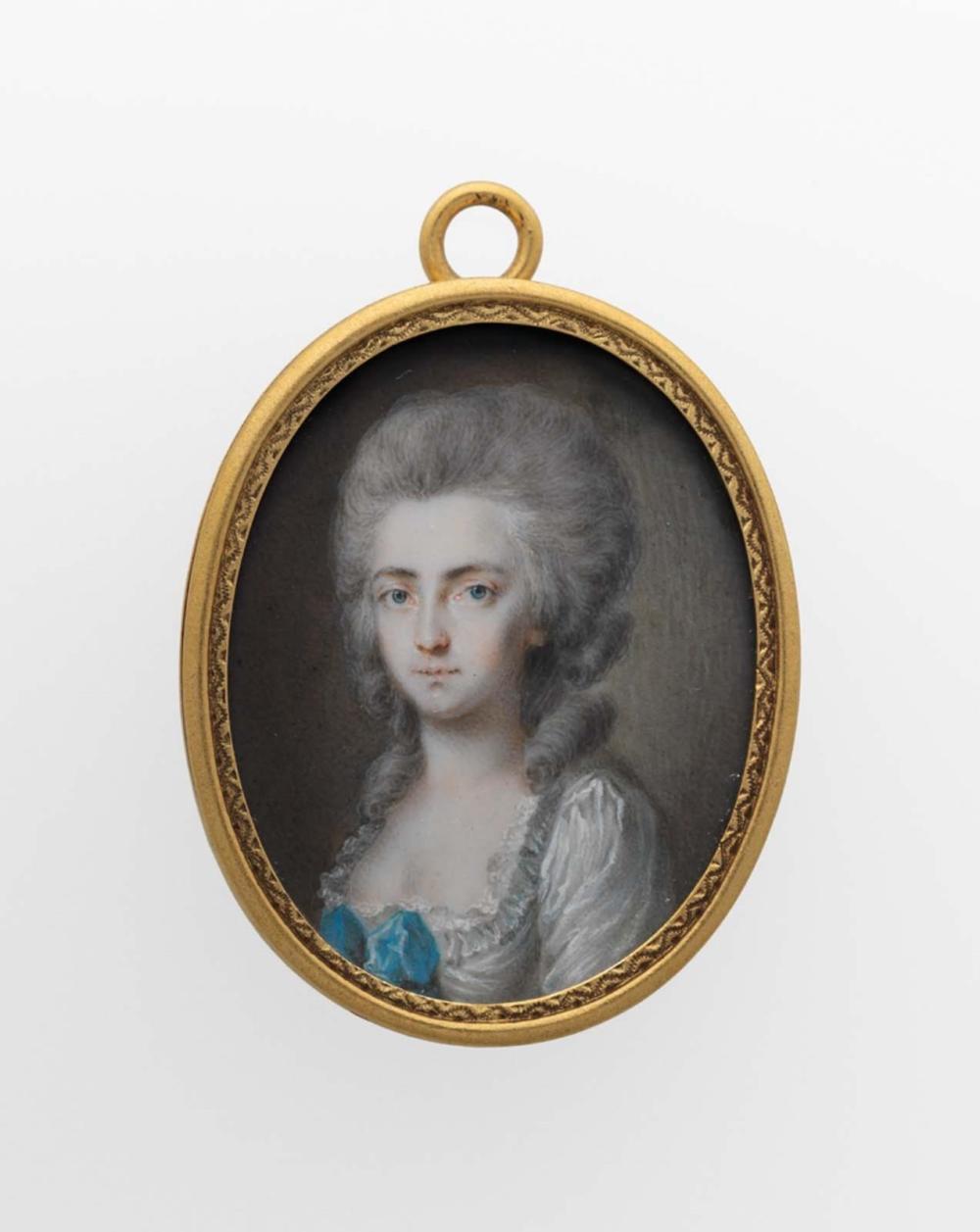Advanced Search 

The Queen of Sweden, consort of Gustav III, King of Sweden
Probably by: Unidentified artist, Swedish (Swedish)
Swedish
about 1780
Medium/Technique
Watercolor and gouache on ivory
Dimensions
4.4 x 3.2 cm (1 3/4 x 1 1/4 in.)
Credit Line
Gift of the heirs of Bettina Looram de Rothschild
Accession Number2015.104
NOT ON VIEW
CollectionsEurope
ClassificationsMiniatures
DescriptionBust-length, in a white décolleté dress with a blue bow. Pendant to 2015.103.
Set in gilt-metal, possibly gold, mount
Set in gilt-metal, possibly gold, mount
ProvenanceAlphonse de Rothschild (b. 1878 – d. 1942) and Clarice de Rothschild (b. 1894 – d. 1967), Vienna; 1938, confiscated from Alphonse and Clarice de Rothschild by Nazi forces (no. AR 1229) [see note 1]; taken to the Kunsthistorisches Museum and stored at the Central Depot, Neue Burg, Vienna; August 28, 1941, given over to the Federal Monuments Office, Vienna and later removed to the monastery of Kremsmünster and subsequently to Alt Aussee; 1945, recovered by Allied forces; 1947, returned to Clarice de Rothschild, New York [see note 2]; by descent to her daughter, Bettina Looram de Rothschild (b. 1924 - d. 2012); about 1990/1992, given by Bettina Looram de Rothschild to members of her family; 2015 gift of the heirs of Bettina Looram de Rothschild to the MFA. (Accession Date: February 25, 2015)
NOTES:
[1] With the Anschluss, or annexation of Austria to Nazi Germany in March, 1938, the possessions of Alphonse and Clarice de Rothschild were seized and expropriated almost immediately by Nazi forces. This miniature appears in a Nazi-generated inventory of 1939 as no. AR (Alphonse Rothschild) 1229: "Miniaturporträt einer Dame mit gepudertem Haar, weissem Kleid und blauer Brustmasche." Katalog beschlagnahmter Sammlungen, inbesondere der Rothschild-Sammlungen in Wien, Verlags-Nr. 4938, Staatsdruckerei Wien, 1939, Privatarchiv, reproduced in Sophie Lillie, "Was einmal war: Handbuch der enteigneten Kunstsammlungen Wiens" (Vienna, 2003), p. 1043.
[2] This miniature was catalogued at the Central Depot, and given over to the Federal Monuments Office in 1941. Card no. AR 1229, Bundesdenkmalamt, Vienna, available on the website of the Zentral Depot Karteien online. It was probably among the many works of art stored elsewhere by the Nazis, which were moved to the abandoned salt mines of Alt Aussee in Austria, to be kept safe from wartime bombing. Allied troops recovered the looted artwork at the end of World War II, and established collecting points where the art could be identified for restitution to its rightful owners. In 1947 Clarice de Rothschild visited the salt mines at Alt Aussee, where she was able to identify the crates of works of art from her family’s collection, facilitating its return shortly thereafter.
NOTES:
[1] With the Anschluss, or annexation of Austria to Nazi Germany in March, 1938, the possessions of Alphonse and Clarice de Rothschild were seized and expropriated almost immediately by Nazi forces. This miniature appears in a Nazi-generated inventory of 1939 as no. AR (Alphonse Rothschild) 1229: "Miniaturporträt einer Dame mit gepudertem Haar, weissem Kleid und blauer Brustmasche." Katalog beschlagnahmter Sammlungen, inbesondere der Rothschild-Sammlungen in Wien, Verlags-Nr. 4938, Staatsdruckerei Wien, 1939, Privatarchiv, reproduced in Sophie Lillie, "Was einmal war: Handbuch der enteigneten Kunstsammlungen Wiens" (Vienna, 2003), p. 1043.
[2] This miniature was catalogued at the Central Depot, and given over to the Federal Monuments Office in 1941. Card no. AR 1229, Bundesdenkmalamt, Vienna, available on the website of the Zentral Depot Karteien online. It was probably among the many works of art stored elsewhere by the Nazis, which were moved to the abandoned salt mines of Alt Aussee in Austria, to be kept safe from wartime bombing. Allied troops recovered the looted artwork at the end of World War II, and established collecting points where the art could be identified for restitution to its rightful owners. In 1947 Clarice de Rothschild visited the salt mines at Alt Aussee, where she was able to identify the crates of works of art from her family’s collection, facilitating its return shortly thereafter.
